The new Land Rover Defender has been highly anticipated by off-road enthusiasts, and it promises to deliver exceptional off-road capabilities right out of the box. However, for those who want to take their Defender to the next level, some various modifications and upgrades can transform it into an unstoppable off-road machine. Here’s a comprehensive look at creating an off-road build for the new Land Rover Defender:
Off-Road Performance of the Stock Defender:
The new Defender comes equipped with an advanced four-wheel-drive system, locking differentials, and a terrain response system that allows the vehicle to tackle various off-road conditions with ease.
It boasts impressive ground clearance, water-wading depth, and approach and departure angles, making it highly capable in challenging terrains. However, for hardcore off-roading enthusiasts, there’s always room for improvement.
Cost of Building an Off-Road Defender:
| Category | Basic | Intermediate | Expert |
|---|---|---|---|
| Suspension Lift Kit | Rough Country ($800-$1,200) | Fox Performance Series ($4,500-$6,000) | – |
| Tires | Falken Wildpeak A/T Trail ($200-$350/tire) | BFGoodrich All-Terrain T/A KO2 ($300-$400/tire) | Goodyear Wrangler Duratrac ($350-$550/tire) |
| Underbody Protection | Smittybilt Skid Plates & Rock Sliders ($500-$1,000) | ARB Underside Protection ($1,000-$2,000) | Warn Skid Plates & Rock Sliders (Price not available) |
| Recovery Gear | Winch (Budget brand – $900-$1200) | Winch (Reputable brand) | Winch (Top brand) |
| Total Estimated Price | $2,400-$3,700 | $8,800-$12,800+ | $14,700+ |
The stock Defender comes well-equipped with features like an advanced four-wheel-drive system, locking differentials, and a terrain response system. While impressive, hardcore off-roaders may want to consider upgrades to take its performance to the next level.
The cost of modifying the Defender can range from $5,000 to $10,000 for basic upgrades like tires, suspension, and skid plates. More extensive builds with engine enhancements, body armor, and specialized overlanding gear can easily exceed $20,000 or more.
Benefits of an Off-Road Defender Build:
Upgrading the Defender can provide numerous advantages, including increased ground clearance, enhanced traction, improved approach and departure angles, better underbody protection, and expanded off-road capabilities with winches, recovery gear, and auxiliary lighting.
However, it’s essential to weigh the potential drawbacks, such as the impact on fuel efficiency, on-road performance, warranty implications, legal considerations, and maintenance complexities.
Who Should Consider Modifying the Defender?
The new Land Rover Defender is a capable off-road vehicle straight from the factory, but certain individuals may benefit more from customizing it for their specific needs:
- Off-Road Enthusiasts: Those who regularly participate in off-road adventures, such as overlanding, rock crawling, or exploring remote areas, will appreciate the added capability and protection of a modified Defender.
- Overlanders: Individuals who enjoy long-distance, self-supported off-road travel may want to equip their Defender with additional storage, camping gear, and other overlanding accessories.
- Off-Road Professionals: Individuals working in industries like mining, forestry, or exploration may require a highly capable and customized off-road vehicle like a modified Defender to tackle challenging job sites.
Challenges and Potential Problems
While modifying the Defender for off-road use can enhance its capabilities, there are some challenges and potential problems to consider:
- Cost: As mentioned earlier, building an off-road Defender can be expensive, especially if you opt for high-end components and extensive modifications.
- Warranty Implications: Certain modifications may void or affect the vehicle’s warranty, so it’s essential to check with the manufacturer or an authorized dealer before making any changes.
- Legality: Some modifications, such as lifting the suspension beyond a certain height or modifying emissions components, may not be legal in certain areas. It’s crucial to research local laws and regulations before proceeding with any modifications.
- Performance Trade-offs: While some modifications may improve off-road performance, they could potentially compromise on-road handling, fuel efficiency, or other aspects of the vehicle’s performance.
- Maintenance and Repair: Modified vehicles may require specialized maintenance and repair services, which could be more challenging to find or more expensive than servicing a stock vehicle.
The various components and parts you can consider for an off-road build of the new Land Rover Defender, along with their prices, benefits, and potential drawbacks.
Suspension and Tire Upgrades:
One of the most crucial upgrades is the suspension system. Premium options like Old Man Emu, and Fox Performance Series offer varying lift heights (2-4 inches), improved dampening, and increased travel, ranging from $1,500 to $6,000. Aggressive all-terrain or mud-terrain tires like BFGoodrich All-Terrain T/A KO2, Goodyear Wrangler Duratrac, or Nitto Trail Grappler M/T ($250-$550 per tire) can provide superior traction and off-road performance.
Suspension:
One of the most crucial upgrades for off-road performance is the suspension system. Here are some popular options and their comparisons:
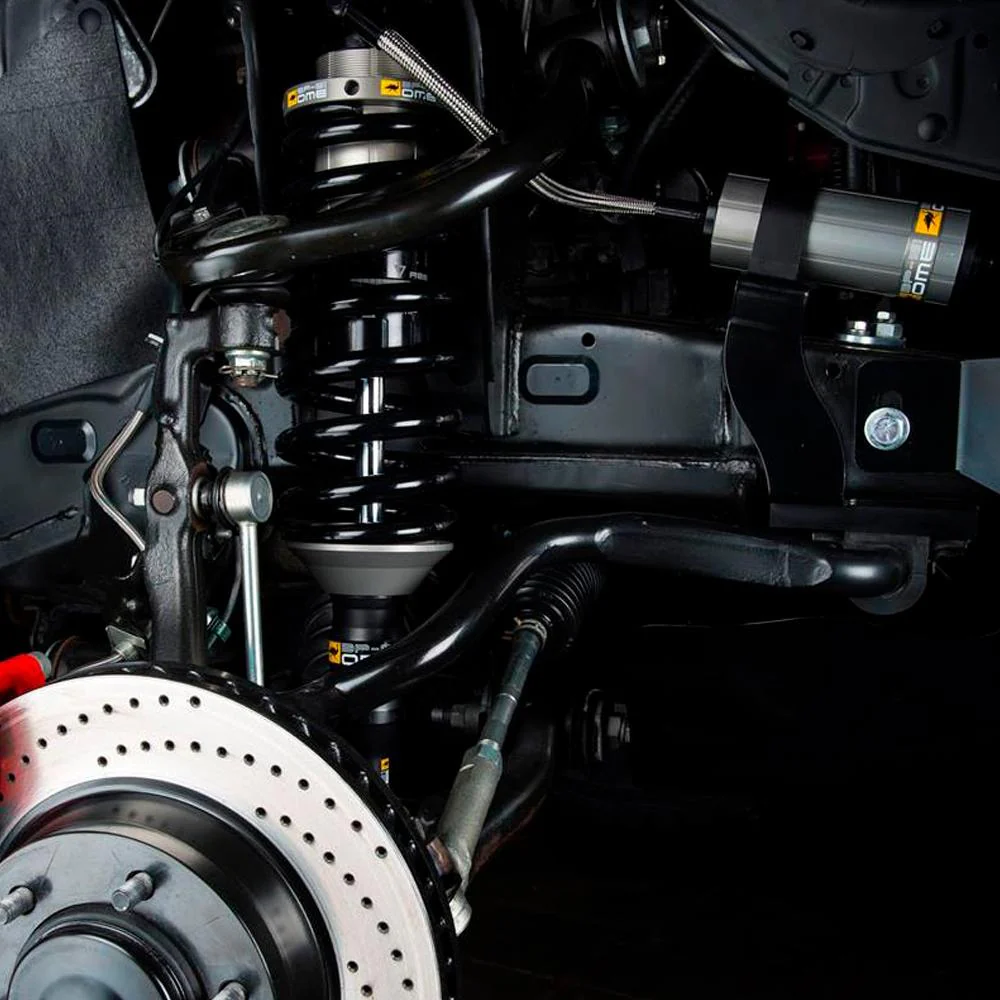
- Old Man Emu BP-51 Suspension System (approx. $1,500 – $2,000):
- Benefits: Designed specifically for the Defender, this system offers improved ride quality, increased ground clearance (up to 2 inches), and better articulation for off-road use. These come for the front and rear nearly $550 for each side.
- Drawbacks: While affordable, it may not provide the same level of performance as more premium suspension systems, especially in extreme conditions.
- Fox Performance Series Suspension (approx. $4,500 – $6,000):
- Benefits: Fox is a renowned brand in the off-road industry, and their Performance Series suspension offers superior dampening, adjustability, and off-road performance. Lift heights range from 2-4 inches.
- Drawbacks: Among the most expensive suspension options, and may require additional components or modifications for optimal performance.
Tires:
Choosing the right off-road tires is crucial for maximizing traction and performance. Here are some top choices and their comparisons:
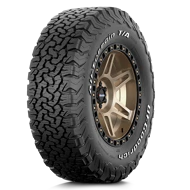
- BFGoodrich All-Terrain T/A KO2 (approx. $250 – $450 per tire):
- Benefits: Widely regarded as one of the best all-terrain tires, the KO2 offers excellent traction on various surfaces, including mud, rocks, and sand. They also provide a relatively comfortable on-road ride.
- Drawbacks: While capable, they may not perform as well as dedicated off-road tires in extreme conditions.
- Goodyear Wrangler Duratrac (approx. $300 – $500 per tire):
- Benefits: The Duratrac is designed for serious off-road use, with an aggressive tread pattern that provides superior traction in mud and loose terrain. They also offer good on-road manners and tread life.
- Drawbacks: They may be noisier and have a harsher ride on paved roads compared to some other options.
- Nitto Trail Grappler M/T (approx. $350 – $550 per tire):
- Benefits: As a dedicated off-road mud-terrain tire, the Trail Grappler excels in extreme conditions, offering exceptional traction and performance on rocks, mud, and loose surfaces.
- Drawbacks: Their aggressive tread pattern can lead to increased road noise and reduced on-road comfort, and they may wear faster on paved surfaces.
Underbody Protection and Recovery Gear:
Skid plates and rock sliders from trusted brands like ARB, Smittybilt, and Warn ($500-$2,000) can protect the Defender’s underbody and vital components. Winches like the Warn Zeon 10-S, Smittybilt X-Series, or Superwinch Terra ($400-$1,500) can assist in self-recovery situations. Recovery boards and traction mats are also essential accessories.
Skid Plates and Armor:
Protecting the Defender’s underbody and vital components from off-road hazards is essential. Here are some popular options for skid plates and armor:
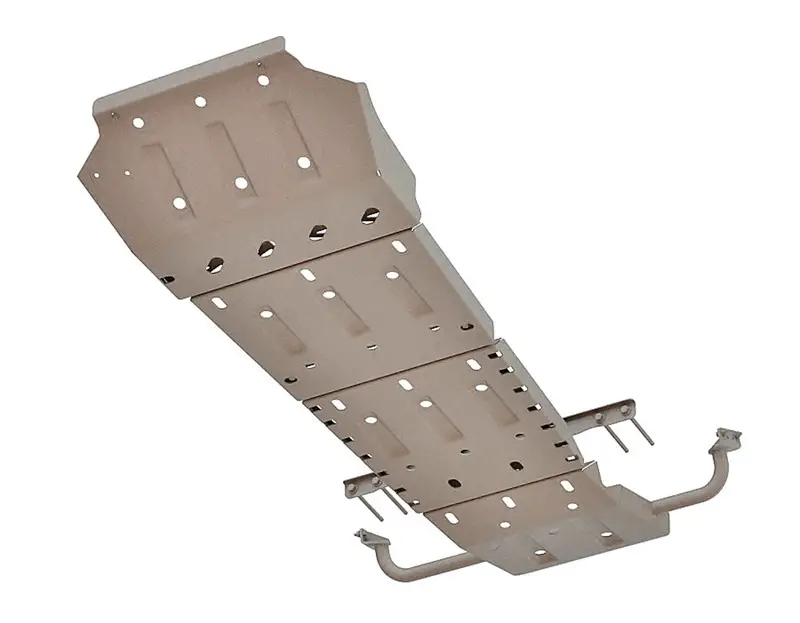
- ARB Underside Protection (approx. $1,000 – $2,000):
- Benefits: ARB is a trusted brand in the off-road community, offering comprehensive underbody protection with sturdy skid plates, transmission and transfer case guards, and differential covers.
- Drawbacks: While highly effective, ARB’s protection systems can be expensive, especially for complete coverage.
- Smittybilt Skid Plates and Rock Sliders (approx. $500 – $1,000):
- Benefits: Smittybilt offers a more affordable option for protecting the Defender’s underbody, with skid plates and rock sliders made from durable steel or aluminum.
- Drawbacks: While capable, Smittybilt’s products may not offer the same level of protection as some premium brands, especially in extreme conditions.
- Warn Rock Sliders and Skid Plates (approx. $800 – $1,500):
- Benefits: Warn is a well-respected brand in the off-road world, and its rock sliders and skid plates are designed to withstand severe impacts and provide comprehensive protection.
- Drawbacks: Warn’s products can be relatively expensive, and installation may require additional modifications or adjustments.
Winches:
A reliable winch can be a lifesaver when navigating challenging off-road terrain. Here are some top choices and their comparisons:
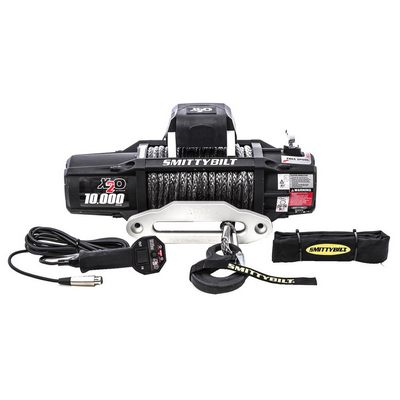
- Warn Zeon 10-S Winch (approx. $1,200 – $1,500):
- Benefits: Warn is a leading name in winches, and the Zeon 10-S offers an impressive 10,000 lb. pulling capacity, making it suitable for recovering even the heaviest vehicles. It also features a durable synthetic rope and wireless remote control.
- Drawbacks: While powerful, the Zeon 10-S is relatively expensive, and installation may require additional accessories or modifications.
- Smittybilt X-Series Winch (approx. $400 – $800):
- Benefits: Smittybilt offers a more budget-friendly option with their X-Series winches, which are available in various pulling capacities (8,000 – 12,000 lbs.) and come with a durable steel cable or synthetic rope.
- Drawbacks: While capable, Smittybilt winches may not offer the same level of durability or features as some premium brands, and their performance in extreme conditions is uncertain.
- Superwinch Terra Winch (approx. $900 – $1,200):
- Benefits: Superwinch is a trusted name in the winch industry, and their Terra series offers reliable performance, with pulling capacities ranging from 9,500 to 16,500 lbs. They also feature durable synthetic ropes and IP68 waterproof ratings.
- Drawbacks: While robust, Superwinch winches can be pricey, and installation may require additional accessories or modifications.
Overlanding and Adventure Upgrades:
For overlanders and adventurers, additional upgrades like roof racks, awnings, storage solutions, auxiliary fuel tanks, and camping gear can enhance the Defender’s capability for extended off-grid travel. Auxiliary lighting, such as LED light bars and spotlights, can improve visibility in low-light conditions.
Overlanding and Adventure Upgrades:
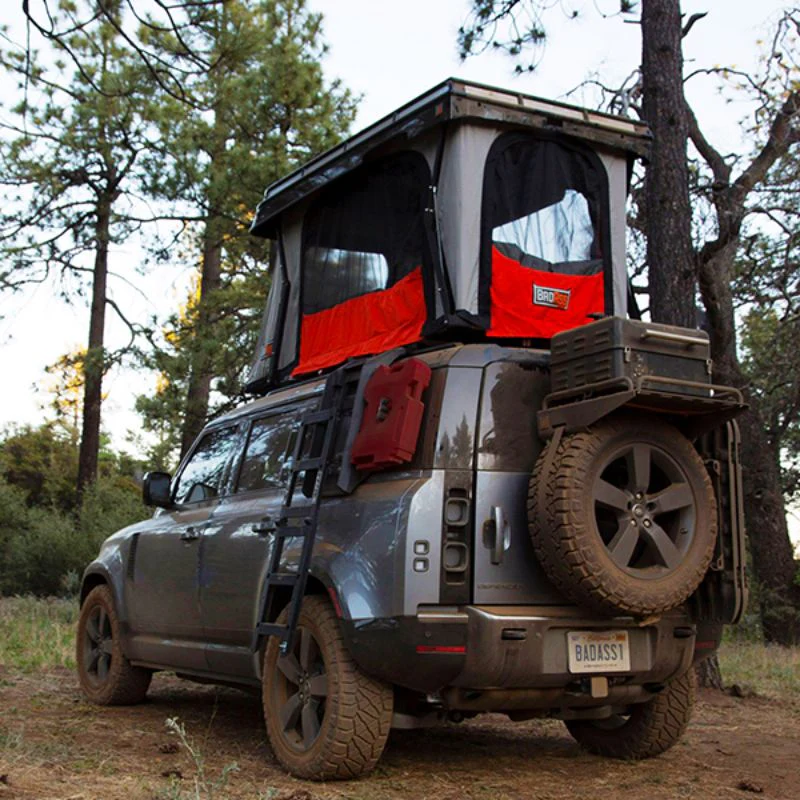
1. Front Runner Roof Rack System (approx. $1,200 – $1,800):
- Benefits: Front Runner is a respected brand in the overlanding community, offering sturdy and modular roof rack systems designed for carrying gear, rooftop tents, and accessories.
- Drawbacks: Can be expensive, and proper installation may require additional components or modifications.
2. ARB Awning (approx. $300 – $800):
- Benefits: ARB’s awnings provide shade and shelter for camping or outdoor activities and can be easily mounted to the Defender’s roof rack or side rails.
- Drawbacks: Larger awnings can be bulky and may impact fuel efficiency or wind noise when not in use.
3. Engel Refrigerator/Freezer (approx. $800 – $1,500):
- Benefits: Engel’s high-quality portable fridges/freezers are designed for off-grid use, keeping food and beverages fresh for extended periods without access to power.
- Drawbacks: Expensive and can consume significant power, requiring a robust auxiliary battery or solar setup.
Budget-Friendly Options:
For those on a tighter budget, more affordable options like Smittybilt skid plates, rock sliders, and winches can provide capable protection and recovery capabilities, albeit with potential trade-offs in durability or performance compared to premium brands.
1. Rough Country Suspension Lift Kit (approx. $800 – $1,200):
- Benefits: Rough Country offers affordable lift kits for the Defender, providing increased ground clearance and improved off-road capability.
- Drawbacks: May not offer the same level of performance or durability as premium brands, and installation may require additional modifications.
2. Falken Wildpeak A/T Trail All-Terrain Tires (approx. $200 – $350 per tire):
- Benefits: Falken’s Wildpeak A/T Trail tires offer a good balance of on-road comfort and off-road traction at a more budget-friendly price point.
- Drawbacks: While capable, they may not perform as well as dedicated off-road tires in extreme conditions.
3. Nilight LED Light Bars (approx. $50 – $200):
- Benefits: Nilight offers affordable LED light bars and auxiliary lighting options for improved visibility during off-road adventures or nighttime driving.
- Drawbacks: May not be as durable or long-lasting as premium lighting solutions, and may require additional wiring or installation work.
Prioritizing Upgrades:
Also Read – Defender Maintenance Tips for Off-Road Enthusiasts
When modifying the Defender, it’s essential to prioritize upgrades based on specific off-road needs and goals. For instance, rock crawlers may prioritize suspension, tires, and underbody protection, while overlanders might focus on storage, auxiliary fuel, and camping gear. Seeking guidance from experienced professionals or reputable off-road shops can help ensure compatibility and proper installation.
By carefully considering the various upgrade options, weighing the pros and cons, and prioritizing based on individual needs, off-road enthusiasts can transform the already capable Land Rover Defender into a true off-road powerhouse, ready to tackle any adventure that lies ahead.
The off-road performance of the new Land Rover Defender, both in its stock form and with various upgrades.
Stock Off-Road Performance:
The new Defender comes equipped with impressive off-road capabilities right out of the box. Here are some of its key features and performance highlights:
- Advanced Terrain Response System: This system allows the driver to select various modes (Mud & Ruts, Rock Crawl, Sand, etc.) that optimize the vehicle’s settings, including throttle response, gearbox, and differential behavior, for different terrain conditions.
- Air Suspension: The Defender’s air suspension can adjust the ride height, providing up to 11.5 inches of ground clearance in its highest setting. This helps navigate over obstacles and improves approach, departure, and breakover angles.
- Locking Differentials: Both the center and rear differentials can be locked, improving traction and preventing wheel spin in low-grip conditions.
- Configurable Terrain Response: This feature allows drivers to fine-tune the Terrain Response settings to their preferences, tailoring the vehicle’s behavior to specific off-road scenarios.
- Wading Depth: With a wading depth of up to 35.4 inches (900mm), the Defender can confidently traverse through deep water crossings.
While the stock Defender is highly capable, certain limitations can be addressed through upgrades, further enhancing its off-road prowess.
Off-Road Performance with Upgrades:
Here’s how various upgrades can take the Defender’s off-road performance to the next level:
- Suspension Upgrades:
- Lift Kits: Installing a suspension lift kit can increase ground clearance, improve approach and departure angles, and provide better articulation over obstacles.
- Performance Shocks/Dampers: Upgrading to high-performance shocks or dampers, such as those from Fox or Icon, can significantly improve ride quality, handling, and control over rough terrain.
- Tire Upgrades:
- All-Terrain or Mud-Terrain Tires: Larger, more aggressive tires with improved tread patterns can provide better traction, flotation, and puncture resistance in challenging off-road conditions.
- Underbody Protection:
- Skid Plates: Installing heavy-duty skid plates can protect vital components, such as the engine, transfer case, and fuel tank, from impacts and damage when traversing over rocks or obstacles.
- Rock Sliders: Adding rock sliders can protect the Defender’s rocker panels and door sills from impacts and provide additional protection in case of rollovers.
- Recovery Equipment:
- Winches: Installing a heavy-duty winch can be a lifesaver when the Defender gets stuck in challenging terrain, allowing self-recovery or assisting other vehicles.
- Recovery Boards: High-quality recovery boards or traction mats can help the Defender regain traction when stuck in mud, sand, or soft surfaces.
- Lighting Upgrades:
- Off-Road Lighting: Installing high-performance LED light bars, spotlights, or auxiliary lighting can improve visibility in low-light conditions, enhancing safety and confidence when off-roading at night or in challenging environments.
- Drivetrain Upgrades:
- Performance Exhaust: Upgrading to a high-flow performance exhaust system can improve engine performance, throttle response, and sound.
- Engine Tuning: Remapping the engine’s computer or installing performance chips can unlock additional power and torque, improving overall off-road capability.
While these upgrades can significantly enhance the Defender’s off-road performance, it’s important to note that some modifications may void the vehicle’s warranty or affect its on-road behavior. It’s crucial to carefully research and consider the implications of each modification and consult with experienced professionals to ensure compatibility and proper installation.
Also Read
- Transforming Toyota Highlander into a Capable Off-Road Vehicle
- Toyota 4Runner Off-Road Build–Upgrades Guide
- Transforming Your Lexus GX470 into an Off-Road Beast

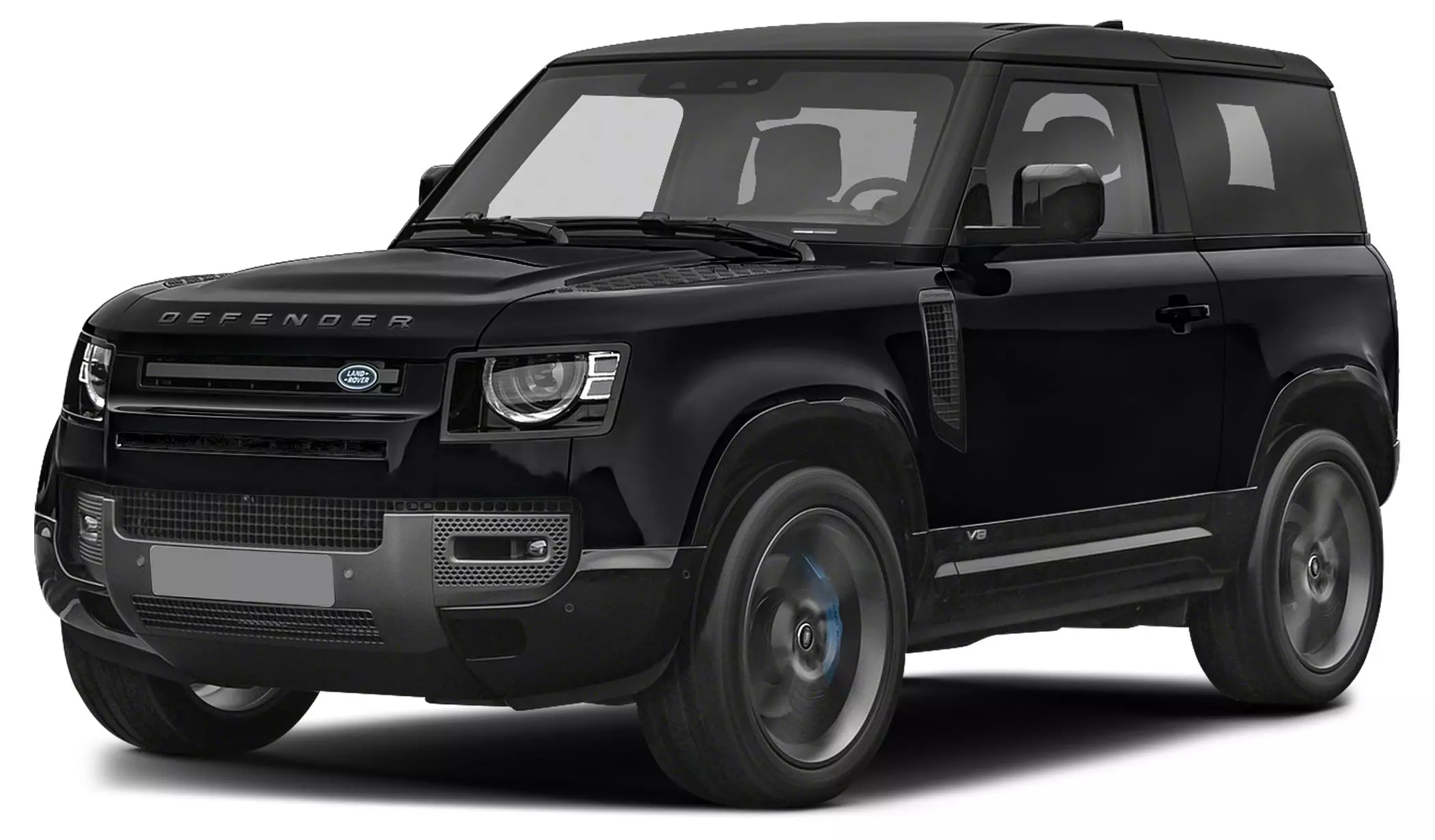

[…] Maintenance Tips for Off-Road Enthusiasts New Land Rover Defender Off-Road Build – SuvExtreme Transforming Your Lexus GX470 into an Off-Road Beast Ford Expedition Off-Road Build: Enhancing […]
[…] Your Ford Edge into an Off-Road Beast Defender Maintenance Tips for Off-Road Enthusiasts New Land Rover Defender Off-Road Build – SuvExtreme Transforming Your Lexus GX470 into an Off-Road Beast Ford Expedition Off-Road Build: Enhancing […]